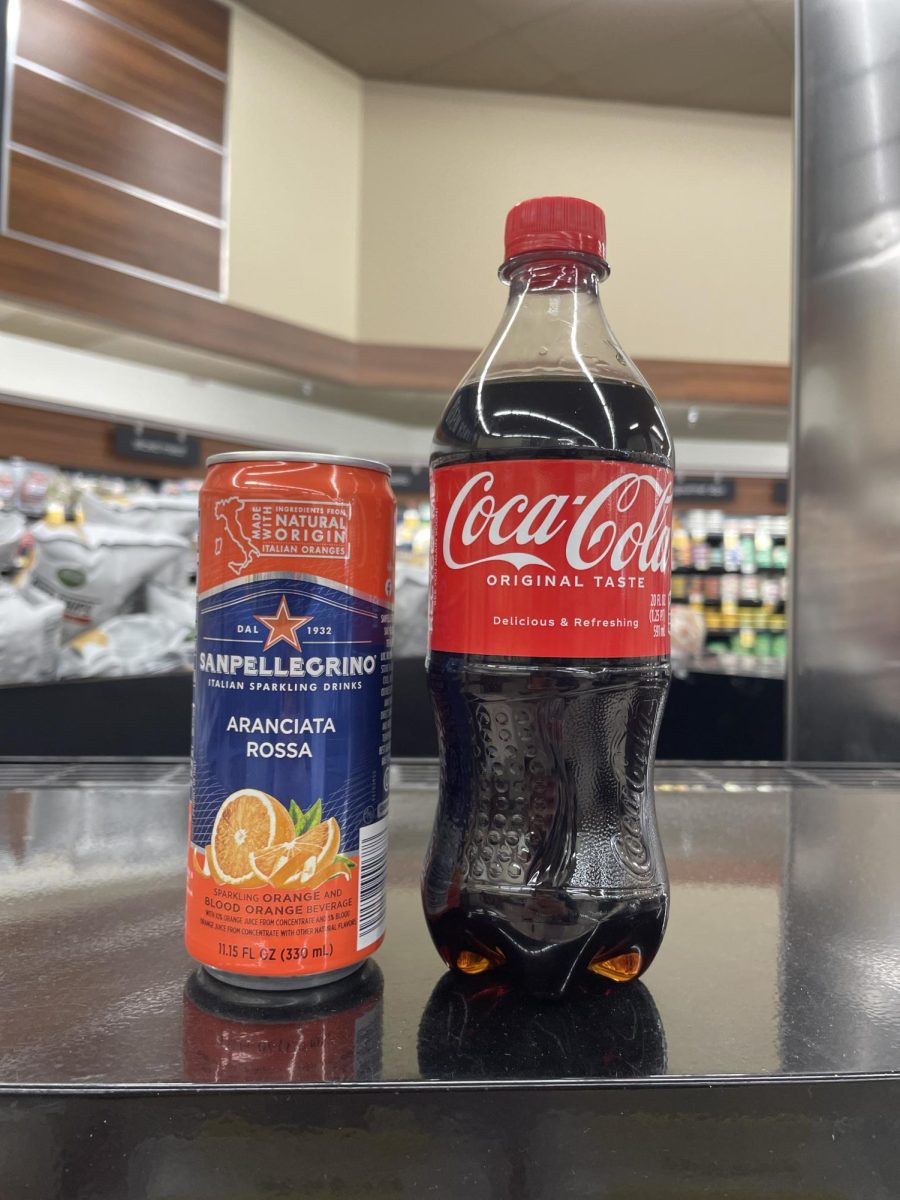America has an obsession with size. From our cars to our houses to our massive roads, it seems that it has been culturally ingrained in this country to think that everything bigger is better. Our American portion sizes are no exception. The average American reportedly consumes 3600 calories per day compared to a global average of 2960. As food and drink companies try to match this cultural phenomenon, a new format for the average drink has emerged: the 20 fluid ounce plastic bottle. This type of container has become the norm for individual drinks on store shelves, and it often replaces individual cans and bottles. While this might cater to our love for supersized everything, is it truly better for the consumer?
Up until the mid 1950’s Coca Cola was only sold in 6.5 oz glass bottles, a size so small it is unthinkable in 2023. The introduction of the 12-ounce can in 1960 revolutionized how we consumed these beverages. This can size became the standard for Coca Cola and other beverage companies for over 40 years. However, in 1993 Coca Cola made their switch to plastic bottles for individual drink sales, claiming that they were more environmentally friendly options. As other soda companies adopted these plastic bottles for their bigger volume and cheaper production costs, the 20 ounce bottle became the most common way to sell sodas individually in America.
The reason for this shift is simple: customers get more bang for their buck, and businesses are able to sell the bottles at a modest increase in price to their smaller counterparts, reaping higher profits. While this may seem like a win-win for everyone, there are actually some significant downsides to consumers.
First and foremost, consuming this much sugar in one sitting is simply not good for human beings. A 20 ounce bottle of Coca Cola contains 65 grams of sugar, which dwarfs our daily recommended amount. The American Heart Association recommends that men consume no more than 36 grams of sugar per day and women limit their consumption to 25 grams. The amount of sugar in a 20 ounce soda bottle dwarfs these recommendations. Compare this to an 8-ounce glass bottle of Original Taste Coke, which contains 26 grams of sugar — still unhealthy, but more manageable for your doctor.
Another significant problem lies in the way that these drinks are bottled. Larger drinks require plastic bottles, and although Coca Cola in 1993 claimed that plastic bottles were better for the environment, we know now that this claim is unfounded in reality. According to the EPA, only 29 percent of plastic bottles ever make it to a recycling center, with the rest ending up in landfills or in the ocean. Cans and bottles are both comparatively more commonly recycled and they are far easier to recycle than plastic bottles.
Smaller drinks also tend to be more popular with customers. A study in 2002 found that customers viewed smaller, 8 ounce cans as higher quality and were more likely to purchase them. Smaller drinks that are packaged in cans and bottles are also scientifically proven to taste better. Plastic bottles can transfer a chemical called acetaldehyde to a drink that can alter the way it tastes. Plastic is also CO2 permeable, which means that carbonation is likely to leak out of the drink. Glass bottles and cans don’t have these issues, leading many people to claim that these drinks taste better.
Despite the allure of getting more beverage for your money, the facts show that these larger, 20 ounce plastic drinks are more unhealthy, worse for the environment, and less enjoyable to consume. Personally, I would love it if I at least had the choice in stores to buy sodas in smaller containers like cans and bottles, and there are many other people who would agree with me. It is time for supermarkets and gas stations to rethink their offerings and start selling smaller, non-plastic drinks.



